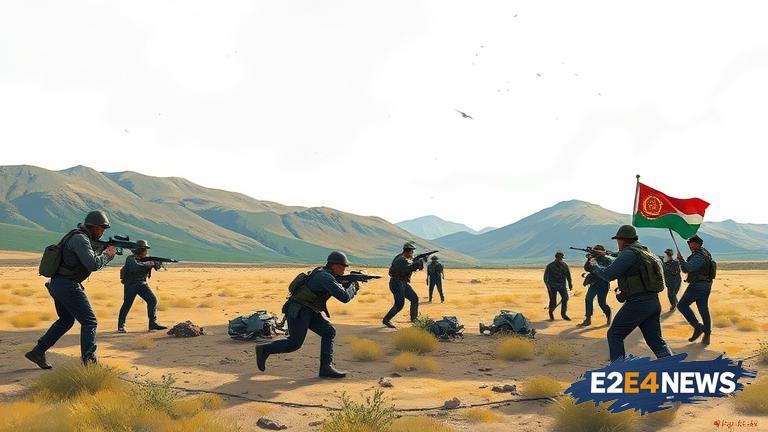The ongoing border dispute between Kyrgyzstan and Tajikistan has taken a turn for the worse, with reports of intense clashes and exchanges of gunfire between the two countries’ militaries. The conflict began on January 27, 2022, when a dispute over a border crossing escalated into violence. Since then, the situation has continued to deteriorate, with both sides accusing each other of aggression. The Kyrgyz government has reported that multiple civilians and military personnel have been killed or injured in the clashes, while the Tajik government has also confirmed casualties on its side. The international community has called for calm and restraint, with the United Nations and the European Union urging both sides to engage in diplomatic talks to resolve the dispute. The conflict has also had a significant impact on the local population, with many residents forced to flee their homes and seek shelter in nearby villages. The Kyrgyz government has established a crisis management center to coordinate relief efforts and provide assistance to those affected by the conflict. Meanwhile, the Tajik government has accused Kyrgyzstan of attempting to seize control of a disputed territory, which Kyrgyzstan has denied. The conflict has also raised concerns about the potential for further escalation, with some analysts warning that it could draw in other regional powers. The border dispute between Kyrgyzstan and Tajikistan is not a new issue, with the two countries having disagreed over the demarcation of their shared border for many years. However, the current conflict is the most intense and prolonged in recent memory, and has raised fears about the stability of the region. The international community has urged both sides to engage in constructive dialogue and to seek a peaceful resolution to the dispute. The conflict has also had significant economic implications, with trade between the two countries severely disrupted. The Kyrgyz government has reported that the conflict has resulted in significant losses to the country’s economy, while the Tajik government has also confirmed economic losses. The conflict has also raised concerns about the potential for humanitarian crises, with many residents in the affected areas in need of assistance. The international community has pledged to provide support to those affected by the conflict, with the United Nations and other organizations providing humanitarian aid. Despite the challenges, there are hopes that a peaceful resolution to the conflict can be found, with both sides having expressed a willingness to engage in diplomatic talks. The Kyrgyz government has proposed a meeting between the two countries’ leaders to discuss the dispute, while the Tajik government has also expressed a willingness to engage in dialogue. The international community has urged both sides to seize this opportunity and to work towards a peaceful resolution to the conflict. The conflict has also highlighted the need for greater regional cooperation and diplomacy, with many analysts arguing that the dispute could have been avoided with more effective communication and negotiation between the two countries. The international community has pledged to support efforts to promote regional stability and cooperation, with the United Nations and other organizations providing support for initiatives aimed at promoting dialogue and understanding between the two countries.





